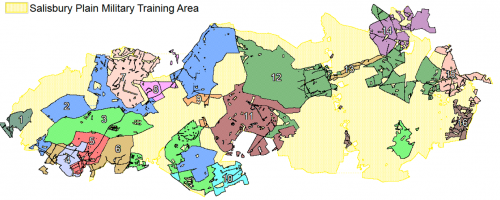Ref: CSFF110009
Lead: Jemma Batten, jemma.bat@btinternet.com
Group members: 29
Length of agreement: 3
Area of group (Hectares): 20,460
Management of priority habitats: – Grassland: chalk grassland, lowland meadows and floodplains – Lowland fen – Reedbeds and riparian habitats – Arable field margins.
Support for priority species: – Birds: corn bunting, lapwing, turtle dove, stone curlew, redshank, curlew, snipe. – Invertebrates: Duke of Burgundy, brown hairstreak, marsh fritillary, shrill carder bee, Desmoulin’s whorl snail. Mammals: lesser horseshoe bat – Arable plant assemblage. Wild Pollinator and Farm Wildlife Package.
Improved water quality: – Phosphate and nitrate in the Hampshire Avon catchment Sediment in the Hampshire Avon catchment – Groundwater drinking sources near Tidworth affected by nitrate and pesticides – The River Avon affected by phosphate, nitrate and sediment.
Flood risk management: – River Wylye catchment and tributaries – Hampshire Avon catchment and tributaries between Salisbury and Upavon, and tributaries above Enford.
Protection for the historic environment, both Scheduled Monuments and SHINE sites, especially scrub management which is a perennial issue on SPTA.
Landscape conservation: – Permanent grassland – Field margins and buffers Bankside trees – Hedgerows.
Multiple environmental benefits: – Creating new wetland habitat along the River Bourne, the Upper Avon and River Wyle. – Creating low input herb-rich grassland habitat in locations where this will increase the habitat connectivity in situations where it will reduce rates of surface run-off, reduce soil erosion and increase soil infiltration rates. – Establishing features to reduce rates of surface run off, reduce soil erosion, and increase soil infiltration rates in the Hampshire Avon catchment.

